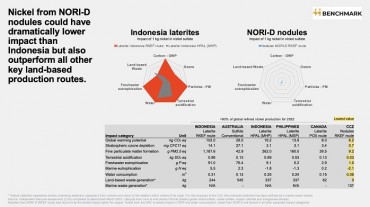WATERLOO, ON, May 3 (Korea Bizwire) – Teledyne DALSA (NYSE: TDY), a Teledyne Technologies company and global leader in machine vision technology, today announced the addition of eight new models to its Genie Nano series of affordable, easy-to-use GigE Vision® cameras. Eight models, including four new monochrome and four color models, are built around the Sony Pregius image sensors, IMX250, -252, -264 and -265. Customers can expect a significant increase in frame rates to achieve faster throughput with Teledyne’s award-winning TurboDrive technology. The addition of these 8 brings the total number of cameras in the series to 27, with more models planned.
The new models, the M2450, C2450, M2050, C2050, M2420, C2420, M2020 and C2020 are designed for industrial imaging applications and are capable of breakthrough data transfer at 2 or even 3 times the standard GigE Vision rates. The Genie Nano series also take full advantage of the Sapera™ LT Software Development Kit (SDK) and field proven Trigger-to-Image-Reliability™ framework for full system-level monitoring, control, and diagnostics from image capture through transfer to host memory.
Key Features:
- TurboDrive for fast frame rates and full image quality
- Trigger-to-Image-Reliability for easy system control and debugging
- Small footprint / light weight: 44mm x 29mm x 21mm / 46 grams
- Wide temperature range (-20 to 60°C) for imaging in harsh environments
- Support for Linux embedded operating platform
“I’m pleased to add these eight models to our growing portfolio,” commented Manny Romero, Senior Product Manager for Teledyne DALSA. “With every new model, users have even more choice and a greater opportunity for affordable, faster and more reliable throughput. No other manufacturer of GigE Vision cameras offers the combination of speed and reliability we’ve built into the Genie Nano series.”
Genie Nano cameras feature a robust design backed by a 3-year warranty and are suitable for a wide range of applications including intelligent traffic systems (ITS), entertainment, medical, food and beverage inspection, and electronics and printed circuit board (PCB) inspection, among many others. Please visit the Genie Nano product page for more information. For sales enquiries, visit our contact page, and for full resolution images, our online media kit.
About Teledyne DALSA’s Machine Vision Products and Services
Teledyne DALSA is a world leader in the design, manufacture and deployment of digital imaging components for the machine vision market. Teledyne DALSA image sensors, cameras, smart cameras, frame grabbers, software, and vision solutions are used in thousands of automated inspection systems around the world and across multiple industries including semiconductor, solar cell, flat panel display, electronics, automotive, medical, packaging and general manufacturing. For more information, visit www.teledynedalsa.com/imaging.
About Teledyne DALSA, Inc.
Teledyne DALSA, a Teledyne Technologies company, is an international leader in high performance digital imaging and semiconductors with approximately 1,000 employees worldwide, headquartered in Waterloo, Ontario, Canada. Established in 1980, the company designs, develops, manufactures and markets digital imaging products and solutions, in addition to providing specialized semiconductor products and services including MEMS. For more information, visit Teledyne DALSA’s website at www.teledynedalsa.com.
All trademarks are registered by their respective companies.
Teledyne DALSA reserves the right to make changes at any time without notice.
Media Contact:
Geralyn Miller
Teledyne DALSA
Tel: +1-519-886-6001 x2187
Email: geralyn.miller@teledynedalsa.com
Sales Contacts:
Sales.americas@teledynedalsa.com
Sales.europe@teledynedalsa.com
Sales.asia@teledynedalsa.com
Source: Teledyne DALSA via Marketwired









Not so long ago, software testing was carried out manually either by the programmers themselves or by users, which could hardly be called a systematic approach and, moreover, did not allow evaluating the quality of the code. A little later, testing emerged as a separate area of expertise within software development, but it quickly became clear that manual testing is ineffective, since it requires large labor resources and a lot of time. The first test automation tools were practically libraries that could be used to write tests, which required the tester to be able to program at the developer level. Modern automated testing tools allow you to create automated tests with minimal human intervention.